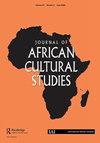遥远苦难的风景:质疑人道主义纪录片对“有害”文化习俗的再现
IF 0.9
2区 社会学
Q2 CULTURAL STUDIES
引用次数: 0
摘要
虽然广泛的媒体干预一直处于全球人道主义运动的前沿,旨在消除在全球健康和发展政策中被归类为“有害”的文化身体修饰做法,但这种做法继续存在。在这篇文章中,我挑出一个这样的干预领域——跨国人道主义纪录片——来探讨它们如何将妇女和女孩参与这些实践的空间景观可视化,以及这种可视化对旨在根除这些行为的干预的影响。我将景观表述为:身体是妇女和女孩必须生活的最终不可逃避的地方,也是身体生活的地理空间位置。通过纪录片中关于女性生殖器切割这一特定“有害”做法的插图,我展示了景观的视觉框架是如何产生的:一种(错误的)概念,即被伤害的身体只是一个反乌托邦的地方,从而排除了乌托邦的梦想,这种梦想促使残割作为一种居住(一个)其他(异位)地方的途径;具有反作用的强制性家长式干预的空间等级制度不仅损害了介导的根除运动的效力,而且延伸开来,无意中促成了这些“有害”做法的持续存在。本文章由计算机程序翻译,如有差异,请以英文原文为准。
Landscapes of Distant Suffering: Interrogating Humanitarian Documentary Film Representation of “Harmful” Cultural Practices
ABSTRACT Although a wide range of media interventions have been at the forefront of global humanitarian campaigns aimed at eradicating cultural body modification practices categorized as “harmful” in global health and development policy, such practices continue to persist. In this article, I single out one such domain of intervention – transnational humanitarian documentaries – to interrogate how they visualize the spatial landscape within which women and girls participate in these practices and the implications of such visualization for interventions aimed at eradicating them. I articulate the landscape as: the body which is the ultimate inescapable place where women and girls must live, and as a geo-spatial location where that body lives. With illustrations from documentary films on one specific “harmful” practice, female genital mutilation, I show how the visual framing of the landscape engenders: a (mis)conception of the harmed body as only a dystopic place, thus foreclosing the utopic dreams that motivate persistence of mutilation as a path to inhabiting (an)other (heterotopic) place; a spatialized hierarchy of coercive paternalistic interventions with counter-productive effects that have not only compromised the efficacy of mediated eradication campaigns, but have, by extension, inadvertently contributed to the very persistence of those “harmful” practices.
求助全文
通过发布文献求助,成功后即可免费获取论文全文。
去求助
来源期刊

Journal of African Cultural Studies
Multiple-
CiteScore
1.70
自引率
10.00%
发文量
13
期刊介绍:
The Journal of African Cultural Studies publishes leading scholarship on African culture from inside and outside Africa, with a special commitment to Africa-based authors and to African languages. Our editorial policy encourages an interdisciplinary approach, involving humanities, including environmental humanities. The journal focuses on dimensions of African culture, performance arts, visual arts, music, cinema, the role of the media, the relationship between culture and power, as well as issues within such fields as popular culture in Africa, sociolinguistic topics of cultural interest, and culture and gender. We welcome in particular articles that show evidence of understanding life on the ground, and that demonstrate local knowledge and linguistic competence. We do not publish articles that offer mostly textual analyses of cultural products like novels and films, nor articles that are mostly historical or those based primarily on secondary (such as digital and library) sources. The journal has evolved from the journal African Languages and Cultures, founded in 1988 in the Department of the Languages and Cultures of Africa at the School of Oriental and African Studies, London. From 2019, it is published in association with the International African Institute, London. Journal of African Cultural Studies publishes original research articles. The journal also publishes an occasional Contemporary Conversations section, in which authors respond to current issues. The section has included reviews, interviews and invited response or position papers. We welcome proposals for future Contemporary Conversations themes.
 求助内容:
求助内容: 应助结果提醒方式:
应助结果提醒方式:


